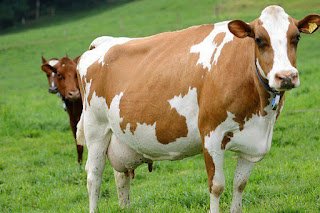Objective and Methods of Animal Breeding
Animal breeding is when animals produce improved breeds of domesticated animals by improving their genotypes and physiology through selective mating by descent, similar in most characters like general appearance, features, size and configuration.
Objectives of Animal Breeding
- Improved growth rate
- Increased production of milk, meat, egg, wool
- Superior quality of milk, meat, eggs, wool
- Improved resistance to various diseases
- Increased productive life
- Increased or, at least, acceptable reproduction rate
Methods of Animal Breeding
1.Inbreeding
Breeding that occurs between animals of the same breed for 4-6 generations is called inbreeding. The progeny obtained from such mating are evaluated and superior males and females are identified for further mating.
Thus inbreeding is necessary if we want to develop a pure line in any animal. Inbreeding exposes harmful recessive genes that are eliminated by selection. It also helps in accumulation of superior genes and elimination of less desirable genes.
2.Out Breeding
Out breeding is the breeding between unrelated animals which may be between individuals of the same breed or between different breeds or different species.
- Out Crossing:- Outcrossing is the best breeding method for animals that are below average in productivity in milk production, growth rate in beef cattle. Outcrossing is a form of mating animals within the same breed but having no common ancestors on either side of their pedigree. The offspring of such a cross is called as an outcross.
- Cross Breeding:- In cross-breeding superior males of one breed are mated with superior females of another breed. Many new animal breeds have been developed by this strategy. It gives better breeds.
- Hybrid:- In this approach, male and female animals of two different species are mated. The progeny obtained from such a mating are usually different from both the parental species.
Intensive Farming:- Advantages & Disadvantages
Intensive farming is a technique used to yield high productivity by keeping large numbers of livestock indoors, it is an agricultural system that aims to get maximum yield from the available land.
This farming technique is also applied in supplying livestock. You could say that under this technique, food is produced in large quantities with the help of chemical fertilizers and pesticides that are appropriately used to save such agricultural land from pests and crop diseases.
Advantages of Intensive Farming
1.One of the major advantages of this farming technique is that the crop yield is high.
2. It helps the farmer to easily supervise and monitor the land and protect his livestock from being hurt or hounded by dangerous wild animals.
3. With the introduction of intensive farming, farm produce, such as vegetables, fruits, and poultry products have become less expensive.
It also aids in solving the worldwide hunger problems to a great extent. This means that common people can now afford a balanced and nutritious diet.
4. The introduction of intensive farming allows the space, equipment, and other requirements for farming to be less and more economical.
5. Another advantage is that large productivity of food is possible with less amount of land.
This leads to economies of scale and directly contributes towards meeting the ever-growing demand for food supplies.
Disadvantages of Intensive Farming
1. Intensive farming involves the use of various kinds of chemical fertilizers, pesticides, and insecticides.
2. It can lead to overcrowding due to the fact that animals are kept in holding facilities which can lead to pollution and break out of diseases and infection.3. The use of chemical fertilizers contaminates soil and water bodies such as lakes and rivers.
4. Heavy use of pesticides and chemical fertilizers can also affect the workers (who spray the pesticides) and the people residing nearby.





